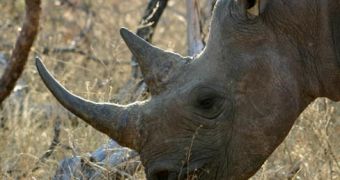Throughout the past 18 months, over 100 rhinos living at the Sabi Saba game reserve in South Africa have had their horns poisoned and injected with an inedible pink dye.
Oddly enough, this procedure is not meant to harm the animals in any way. Quite the contrary: the poison and the dye are probably the only things standing between the rhinos and the poachers looking to kill them.
The conservationists responsible for this one-of-a-kind anti-poaching campaign explain that, whenever rhinos are killed and their horns get stolen, the latter are ground into powder and either eaten or used to make traditional medicine.
Therefore, once the horns are poisoned and can no longer be consumed, poachers are highly likely to give up on the idea of getting their hands on them. Mongabay informs us that, despite their being poisoned, such horns do not constitute a threat to the life of those who come to consume them.
However, these people are expected to get sick and even require medical attention, so others will understand that the practice of consuming rhino horns is not something they should indulge in.
“The practice is legal. The chemicals are available over the counter. We are advertising it, doing a media run now and putting up signs on our fences,” argued conservationist Andrew Parker, the current chief executive of the Sabi Sand Wildtuin Association.
“If somebody does consume it, they won't die and hopefully word will spread that you shouldn't take rhino horn,” Andrew Parker went on to argue.
The same source informs us that the symptoms associated with consuming rhino horns are nausea, stomachache and diarrhea.
As far as the pink dye injected into these horns goes, it appears that its purpose is that of making it possible for the scanners located at airports to pick up on the rhino horns even when they have already been turned into power.

 14 DAY TRIAL //
14 DAY TRIAL //